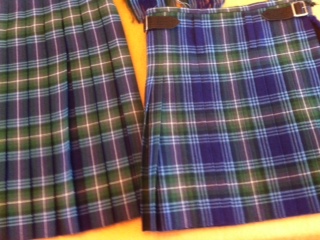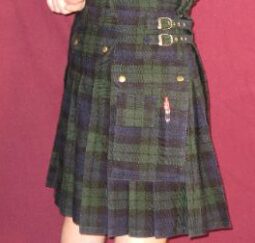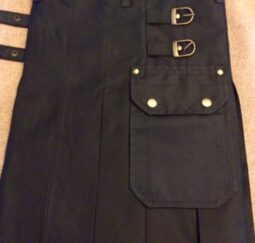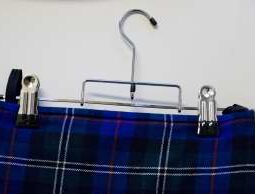$0.00
Out of stock
Why an eight yard knife pleated kilt? There are several reasons:
1) It is the standard form of pleating. When people think of a kilt, this is the style they imagine. It is the most recognized form of kilt today.
2) The swish and swing! All that extra cloth is contained in the back of the kilt, which makes this kilt heavier in the back than in the front. This makes the back act as a pendulum when you walk (or march, or dance), giving the pleats that swish and swing that is associated with the modern kilt.
3) A lot of pleats. The eight yard kilt will contain many more pleats than the four yard kilt. To some this gives the kilt a more formal look — though you can certainly wear a four yard kilt formally, or an eight yard kilt casually.
4) Personal preference. You may just like the look of this style! There are two two basic methods of pleating a kilt. The first is pleating to the stripe, a a vertical stripe is selected and the fabric will be folded so that this stripe runs down the centre of each pleat. The result is that the horizontal bands appear along the back and sides of the kilt. This type of pleating results in a kilt that will look different from the front than it does from the back. It is often referred to as a military pleat because this is the style of pleating used by most military regiments. o lot of pipe bands also prefer this style of pleat.
Pleating to the Sett
Pleating to the sett is the most common type of pleating which results in the kilt looking the same at the front and the back. A full sett of the tartan is folded into each pleat so that the tartan pattern appears to be continuous across all the pleats. The kilt on the right in the image above is pleated to the sett, the kilt on the left is a box pleat.
Pleating to the Stripe
Pleating to the stripe is also known as military pleating as it is commonly used by military bands. This is where a vertical stripe in the tartan is selected and placed in the middle of each pleat. The result is that horizontal or vertical bands are shown at the sides and rear of the kilt which look different to the tartan at the front. When you select this type of pleating, you will need to select the stripe to pleat to. The question of how the kilt should fit is very important and is often overlooked by both new kilt wearers and those who have worn the kilt for years. There is a trend today to wear the kilt with a short or no rise. This means that the kilt is worn as the trousers are, down around the waist near the hips. None of the kilt protrudes above the beltline. This is comfortable for shorter, thin-framed men, but is unsuitable for tall or heavy-set men. Furthermore, the kilt is intended to be worn with the upper portion protruding above the beltline. In fact, the top of the kilt should rise high enough to come to the wearer’s bottom ribs. For the average man, this will be a rise of one-and-one-half to two-and-one-half inches above the belt line. For very tall men it can rise as much as three to four inches above the beltline. Highland dancers and Scottish country dancer often ask for a very high rise so that when they raise their hands above their heads, tartan is still seen instead of a white shirt front. When ordering a kilt explain how far you want the top of you kilt to rise above the belt.
Manufactured by: The Kilt Lady
Additional information
| Weight | 0.00 kg |
|---|---|
| Dimensions | 0.00 × 0.00 × 0.00 cm |





